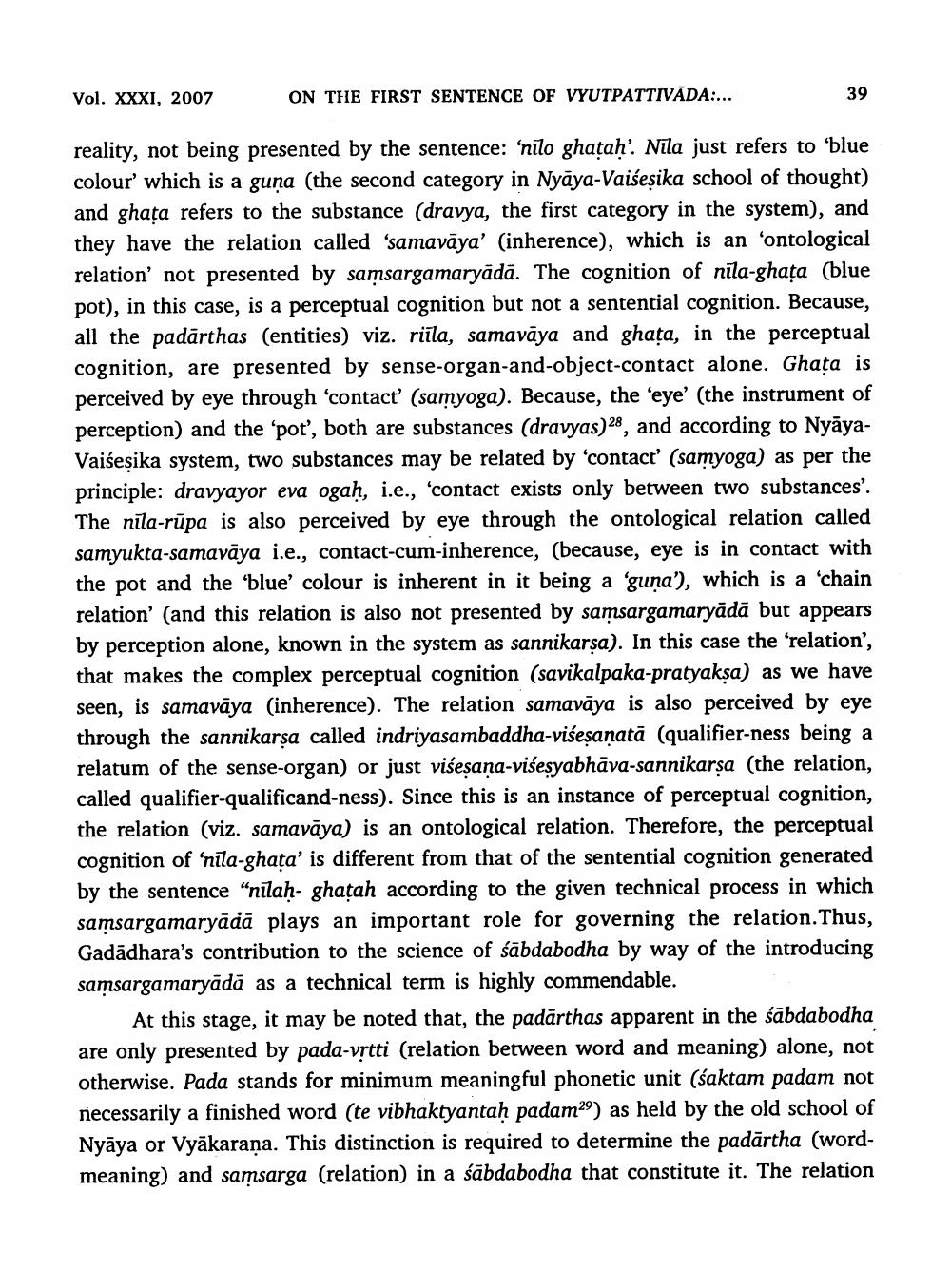________________
Vol. XXXI, 2007
ON THE FIRST SENTENCE OF VYUTPATTIVADA:...
39
reality, not being presented by the sentence: 'nilo ghaṭaḥ'. Nila just refers to 'blue colour' which is a guna (the second category in Nyaya-Vaiseṣika school of thought) and ghata refers to the substance (dravya, the first category in the system), and they have the relation called 'samavaya' (inherence), which is an 'ontological relation' not presented by samsargamaryādā. The cognition of nila-ghața (blue pot), in this case, is a perceptual cognition but not a sentential cognition. Because, all the padarthas (entities) viz. riila, samavāya and ghata, in the perceptual cognition, are presented by sense-organ-and-object-contact alone. Ghata is perceived by eye through 'contact' (samyoga). Because, the 'eye' (the instrument of perception) and the 'pot', both are substances (dravyas)28, and according to NyāyaVaiseṣika system, two substances may be related by 'contact' (samyoga) as per the principle: dravyayor eva ogah, i.e., 'contact exists only between two substances'. The nila-rupa is also perceived by eye through the ontological relation called samyukta-samavāya i.e., contact-cum-inherence, (because, eye is in contact with the pot and the 'blue' colour is inherent in it being a 'guna'), which is a 'chain relation' (and this relation is also not presented by samsargamaryādā but appears by perception alone, known in the system as sannikarṣa). In this case the 'relation', that makes the complex perceptual cognition (savikalpaka-pratyakṣa) as we have seen, is samavāya (inherence). The relation samavāya is also perceived by eye through the sannikarṣa called indriyasambaddha-viseṣaṇatā (qualifier-ness being a relatum of the sense-organ) or just viseṣaṇa-viśeṣyabhāva-sannikarṣa (the relation, called qualifier-qualificand-ness). Since this is an instance of perceptual cognition, the relation (viz. samavāya) is an ontological relation. Therefore, the perceptual cognition of 'nila-ghata' is different from that of the sentential cognition generated by the sentence "nilah- ghatah according to the given technical process in which samsargamaryādā plays an important role for governing the relation. Thus, Gadadhara's contribution to the science of sabdabodha by way of the introducing samsargamaryādā as a technical term is highly commendable.
At this stage, it may be noted that, the padarthas apparent in the śabdabodha are only presented by pada-vṛtti (relation between word and meaning) alone, not otherwise. Pada stands for minimum meaningful phonetic unit (śaktam padam not necessarily a finished word (te vibhaktyantaḥ padam29) as held by the old school of Nyaya or Vyakarana. This distinction is required to determine the padartha (wordmeaning) and samsarga (relation) in a sabdabodha that constitute it. The relation




